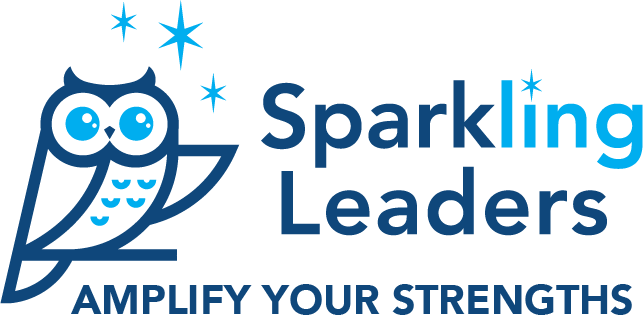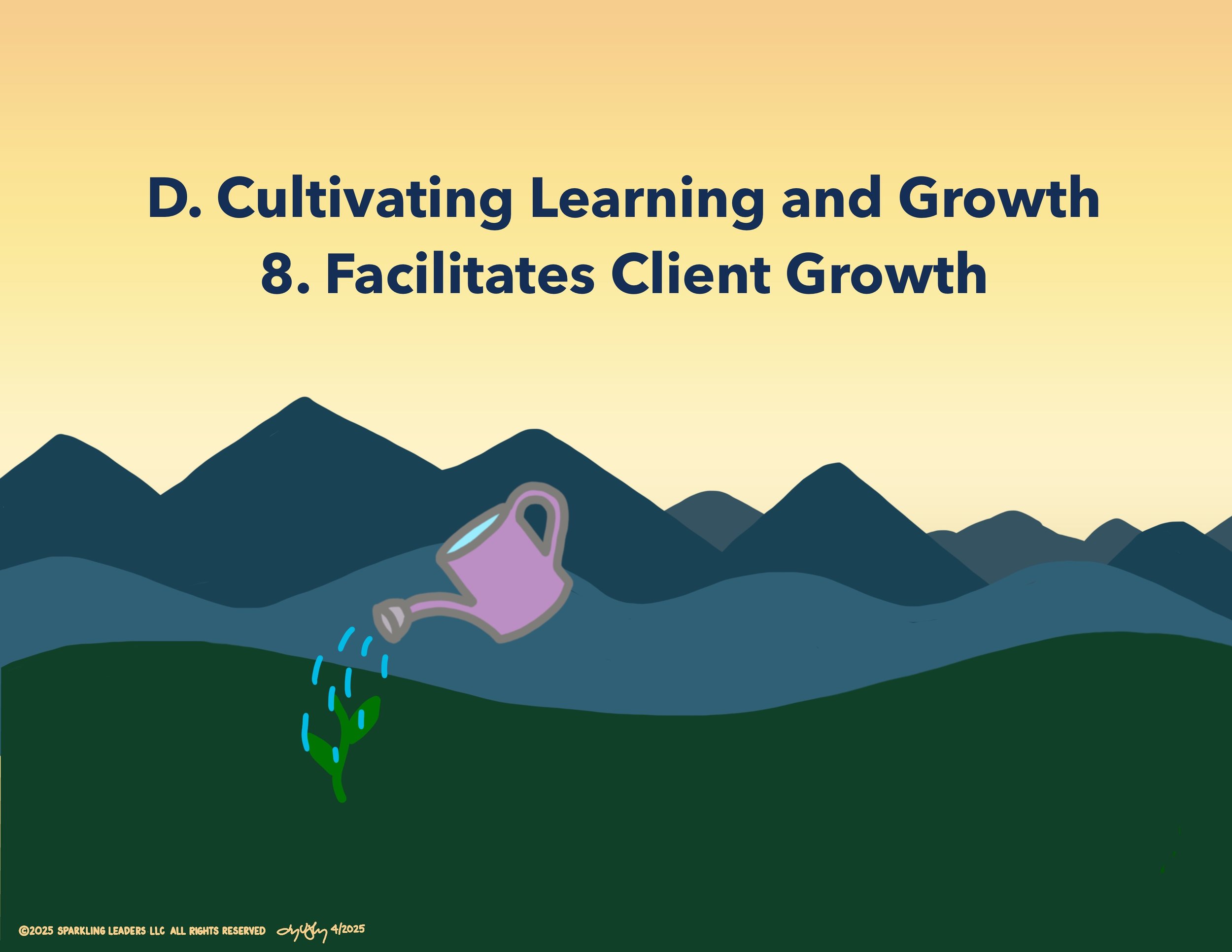The ICF Competencies capture the mindset of coaching and provide a framework for our coaching practices, which are built on trust, curiosity, and respect.
Below is information about each competency. Click on the links below or on the images on this page to access the gallery pages with the flash cards for studying.
1 Demonstrates Ethical Practice | 2 Embodies a Coaching Mindset | 3 Establishes and Maintains Agreements | 4 Cultivates Trust and Safety | 5 Maintains Presence | 6 Listens Actively | 7 Evokes Awareness | 8 Facilitates Client Growth
The competencies below have been updated to reflect the changes from the 2019 to the 2025 ICF Core Competencies.
Here is my 10/13/25 blog article with a summary of what you need to know.
Here is the Competencies comparison chart on the ICF site for more information (access the PDF directly here).
Updated with 2025 ICF Competency components in bold green text.
1. Demonstrates Ethical Practice
Understands and consistently applies coaching ethics and standards of coaching.
Demonstrates personal integrity and honesty in interactions with clients, sponsors, and relevant stakeholders
Is sensitive to clients’ identity, environment, experiences, values, and beliefs
Uses language appropriate and respectful to clients, sponsors, and relevant stakeholders
Abides by the ICF Code of Ethics and upholds the ICF Core Values
Maintains confidentiality with client information per stakeholder agreements and pertinent laws
Maintains the distinctions between coaching, consulting, psychotherapy, and other support professions
Refers clients to other support professionals, as appropriate
2. Embodies a Coaching Mindset
Engages in ongoing personal and professional learning and development as a coach. Works with coaching supervisors or mentor coaches as needed. Develops and maintains a mindset that is open, curious, flexible, and client-centered.
Acknowledges that clients are responsible for their own choices
Engages in ongoing learning and development as a coach, including remaining aware of current coaching best practices and use of technology
Develops an ongoing reflective practice to enhance one’s coaching
Remains aware of and open to the influence of biases, context, and culture on self and others
Uses awareness of self and one’s intuition to benefit clients
Develops and maintains the ability to manage one’s emotions
Maintains emotional, physical, and mental well-being in preparation for, throughout, and following each session
Seeks help from outside sources when necessary
Nurtures openness and curiosity in oneself, the client, and the coaching process
Remains aware of the influence of one’s thoughts and behaviors on the client and others
3. Establishes and Maintains Agreements
Partners with the client and relevant stakeholders to create clear agreements about the coaching relationship, process, plans and goals. Establishes agreements for the overall coaching engagement as well as those for each coaching session.
Describes one’s coaching philosophy and clearly defines what coaching is and is not for potential clients and stakeholders
Reaches agreement about what is and is not appropriate in the relationship, what is and is not being offered, and the responsibilities of the client and relevant stakeholders, including commitment to working toward coaching goals
Reaches agreement about the guidelines and specific parameters of the coaching relationship such as logistics, fees, scheduling, duration, termination, confidentiality and inclusion of others
Partners with the client and relevant stakeholders to establish an overall coaching plan and goals
Partners with the client to determine client-coach compatibility
Partners with the client to identify or reconfirm what they want to accomplish in the session
Partners with the client to define what the client believes they need to address or resolve to achieve what they want to accomplish in the session
Partners with the client to define or reconfirm measures of success for what the client wants to accomplish in the coaching engagement or individual session
Partners with the client to manage the time and focus of the session
Continues coaching in the direction of the client’s desired outcome unless the client indicates otherwise
Partners with the client to close the coaching relationship in a way that respects the client and the coaching experience
Revisits the coaching agreement when necessary to ensure the coaching approach is meeting the client’s needs
4. Cultivates Trust and Safety
Partners with the client to create a safe, supportive environment that allows the client to share freely. Maintains a relationship of mutual respect and trust.
Seeks to understand the client within their context which may include their identity, environment, experiences, values and beliefs
Demonstrates respect for the client’s identity, perceptions, style and language and adapts one’s coaching to the client
Acknowledges and respects the client’s unique talents, insights and work in the coaching process
Shows support, empathy and concern for the client
Acknowledges and supports the client’s expression of feelings, perceptions, concerns, beliefs and suggestions
Demonstrates openness and transparency as a way to display vulnerability and build trust with the client
5. Maintains Presence
Is fully conscious and present with the client, employing a style that is open, flexible, grounded and confident
Remains focused, observant, empathetic and responsive to the client
Demonstrates curiosity during the coaching process
Remains aware of what is emerging for self and client in the present moment
Manages one’s emotions to stay present with the client
Demonstrates confidence in working with strong client emotions during the coaching process
Is comfortable working in a space of not knowing
Creates or allows space for silence, pause or reflection
6. Listens Actively
Focuses on what the client is and is not saying to fully understand what is being communicated in the context of the client systems and to support client self-expression
Considers the client’s context, identity, environment, experiences, values and beliefs to enhance understanding of what the client is communicating
Reflects or summarizes what the client is communicating to ensure clarity and understanding
Recognizes and inquires when there is more to what the client is communicating
Notices, acknowledges and explores the client’s emotions, energy shifts, non-verbal cues or other behaviors
Integrates the client’s words, tone of voice and body language to determine the full meaning of what the client is communicating
Notices trends in the client’s behaviors and emotions across sessions to discern themes and patterns
7. Evokes Awareness
Facilitates client insight and learning by using tools and techniques such as powerful questioning, silence, metaphor or analogy
Considers client experience when deciding what might be most useful
Challenges the client as a way to evoke awareness or insight
Asks questions about the client, such as their way of thinking, values, needs,
wants and beliefsAsks questions that help the client explore beyond current thinking
Invites the client to share more about their experience in the moment
Notices what is working to enhance client progress
Adjusts the coaching approach in response to the client’s needs
Helps the client identify factors that influence current and future patterns of behavior, thinking or emotion
Invites the client to generate ideas about how they can move forward and what they are willing or able to do
Supports the client in reframing perspectives
Shares observations, knowledge, and feelings, without attachment, that have the potential to create new insights for the client
8. Facilitates Client Growth
Partners with the client to transform learning and insight into action. Promotes client autonomy in the coaching process.
Works with the client to integrate new awareness, insight, or learning into their worldview and behaviors
Partners with the client to design goals, actions, and accountability measures that integrate and expand new learning
Acknowledges and supports client autonomy in the design of goals, action,s and methods of accountability
Supports the client in identifying potential results or learning from identified action steps
Invites the client to consider how to move forward, including resources, support, and potential barriers
Partners with the client to summarize learning and insight within or between sessions
Partners with the client to integrate learning and sustain progress throughout the coaching agreement
Acknowledges the client’s progress and successes
Partners with the client to close the session









